Community cat TNR in central Utah
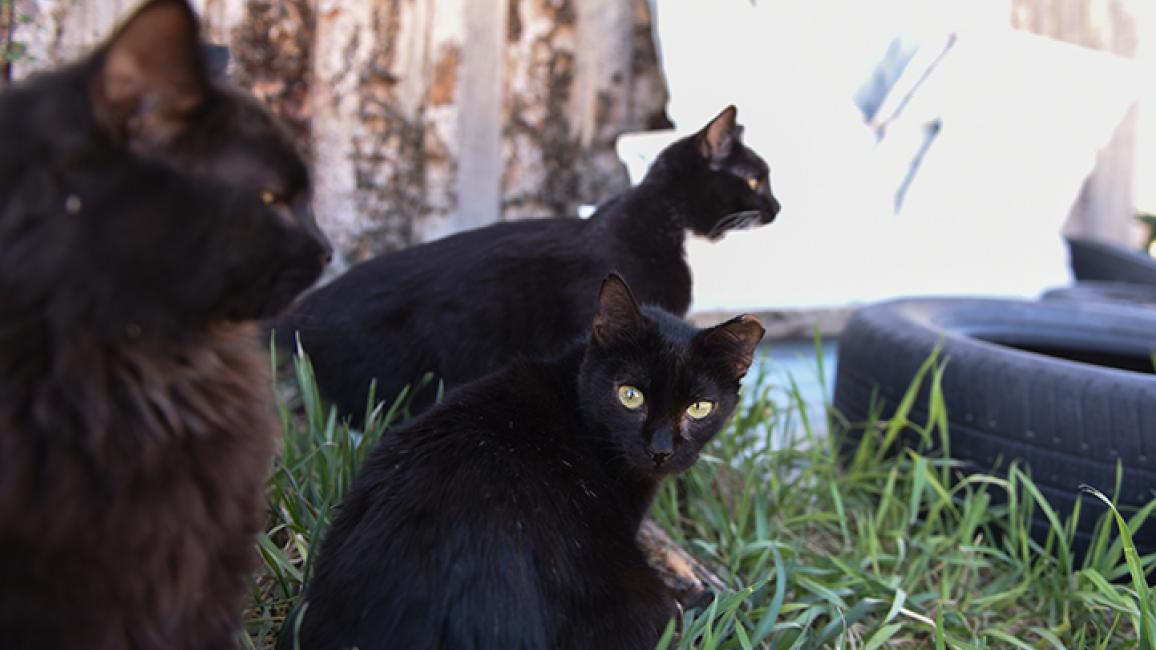
Life just got a lot better for cats in an area of Utah where the number of free-roaming felines had begun to spiral out of control. In an intensive two-day project, staff and volunteers with Best Friends’ Four Directions Community Cat program humanely trapped 229 free-roaming cats to be spayed or neutered, vaccinated and returned to where they’d been living. An additional 32 young kittens were rescued during the project (more about them below).
How you can help community cats
- If you find kittens, don’t assume they are abandoned. It’s more likely that their mom is out hunting or is simply hiding. Interfering can place kittens in more danger. Learn more.
- If you feed ‘em, fix ‘em. Not sure how to get started? Learn more about TNR.
- Donate or volunteer to help with TNR. Find an organization near you.
Best Friends is working toward ending the killing of dogs cats in shelters by 2025, and that means partnering with shelters across the country to save more animals. Trap-neuter-return (TNR) has been proven to be the most effective way to reduce the number of community cats over time. It slows the spread of disease and reduces the number of unsocialized cats and kittens entering shelters. The Sevier County Animal Shelter, where many of the cats and their kittens were ending up, has a low save rate for cats. Best Friends was taking in friendly cats from the shelter, but reducing the number of cat and kitten intakes was also a priority.
More about trap-neuter-return for cats
Here’s an inside look at this successful large-scale, trap-neuter-return project, along with cats and their caregivers.
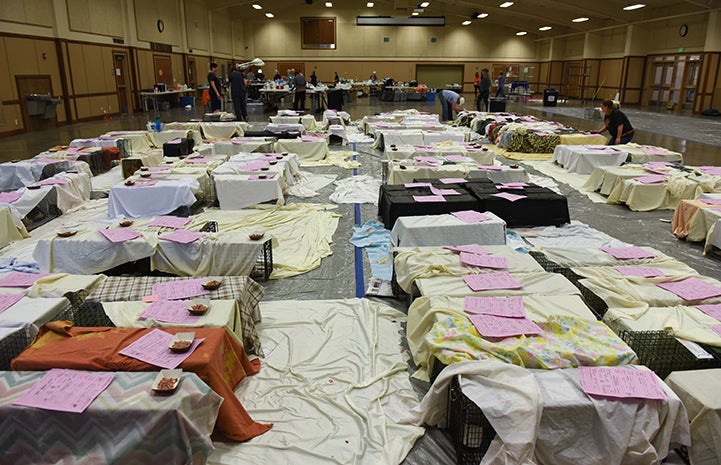
Cats at the Sevier County Fairground waiting in covered humane traps to reduce stress before surgery
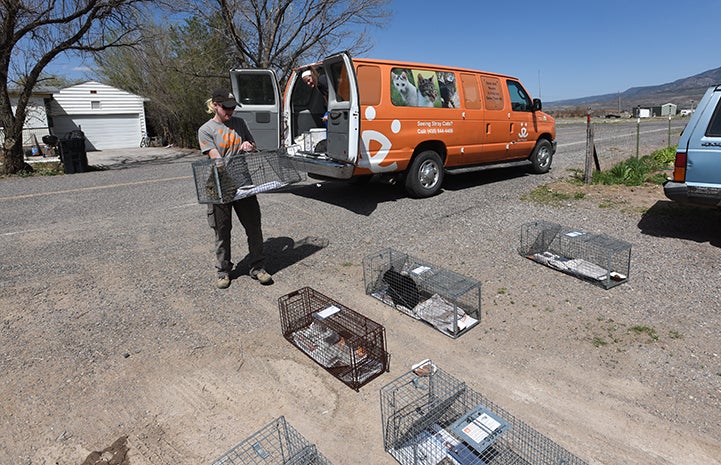
Meg Burke from Best Friends prepares to release cats after surgery.
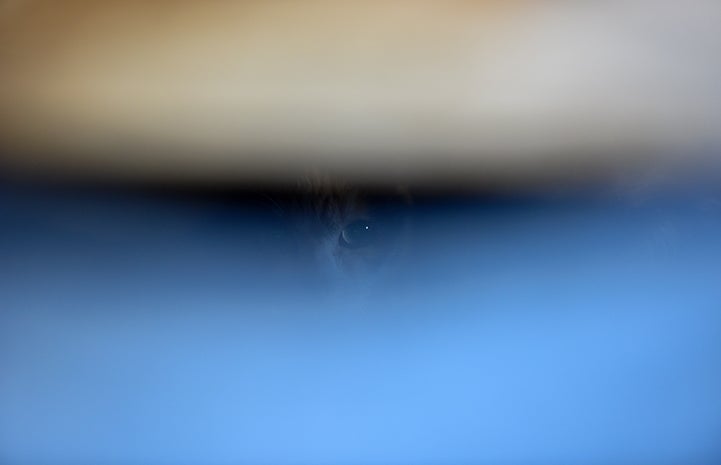
Many of the free-roaming cats in the area have never been socialized to people. If they end up in a shelter, their options are limited because they cannot be adopted into a home.
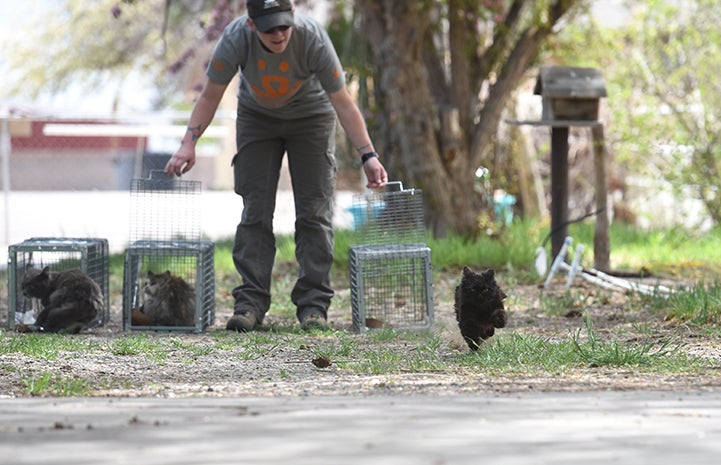
Trap-neuter-return (TNR) means trapping, neutering, vaccinating and returning community cats to their original outdoor locations, which ultimately reduces the number of cats entering the shelter system. After being spayed or neutered and vaccinated, cats are released at the same location where they were humanely trapped.
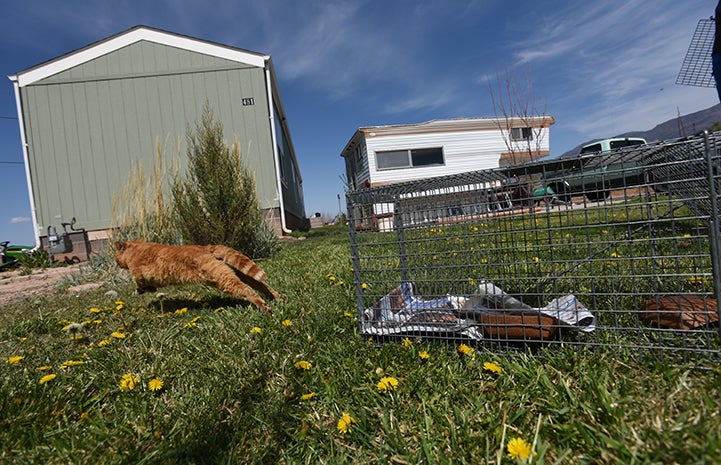
TNR also improves the health and welfare of cats. After being sterilized and vaccinated, they can live healthy, happy lives in communities where caring residents look out for them.

A well-cared-for colony in nearby Elsinore, Utah, has more than 20 spayed or neutered cats, but you’d never know it. Though they all are fed daily, they hardly make a dent in the landscape. Some dusty paw prints in a shed are the only proof they are there.
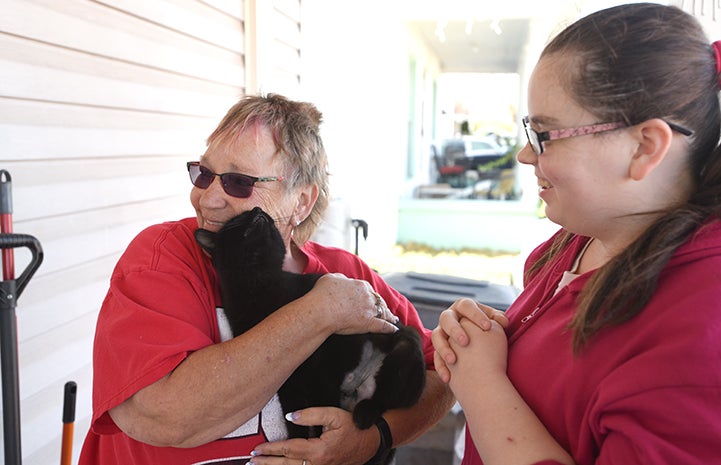
Not all community cats are feral. Some learn to trust their people ― like colony caregiver Cindy Hide, who embraces Blackie after her spay surgery.
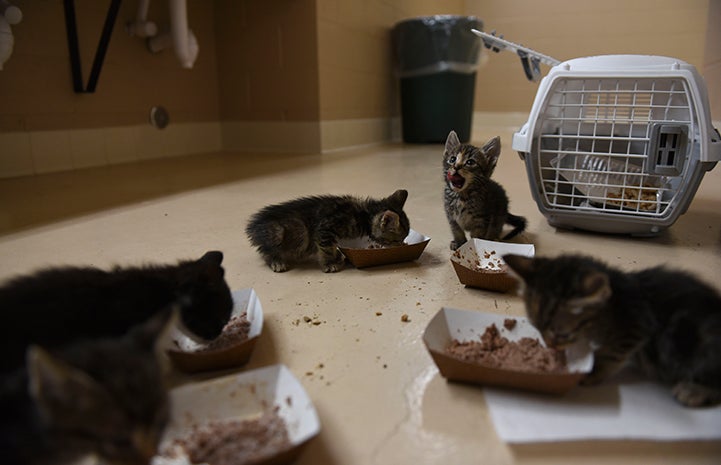
As for the 32 kittens rescued by Best Friends, they are young enough to become friendly with people. “You’d be surprised at how fast hungry kittens come around,” says Janna Kruse, community cat program coordinator.
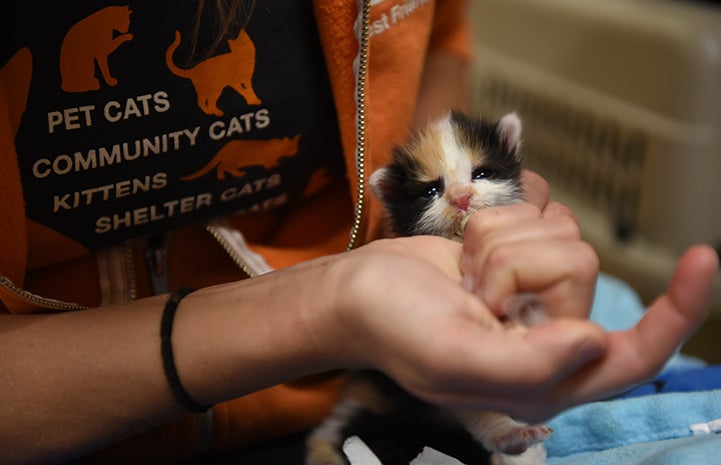
The bathrooms at Sevier County Fairground became an impromptu kitten nursery before these little ones were transported to Best Friends in Salt Lake City and the Sanctuary in Kanab. They will grow up well-socialized and make excellent pets when they are old enough to be adopted.
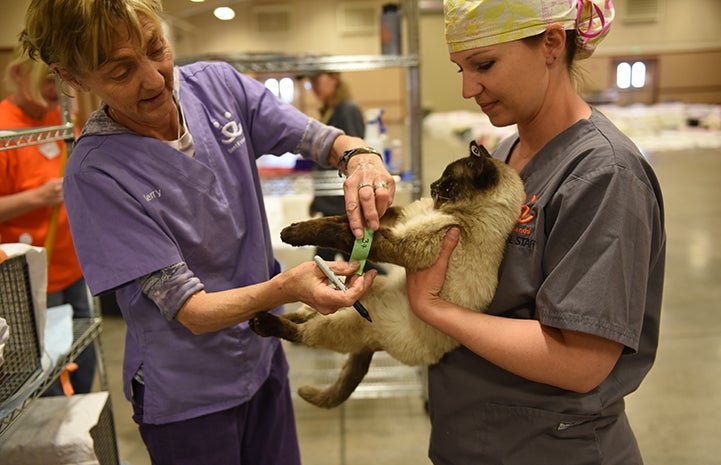
Local residents were thrilled to have help from Best Friends. “An event like this has been a dream of mine to have in our community for so long, and it has been amazing seeing it in action,” says Abigail Brinda, founder-director at Sevier County Dog House Project. (We) will be forever grateful, and I know the cats here will be able to live better lives now they have vet care, spaying and neutering.”
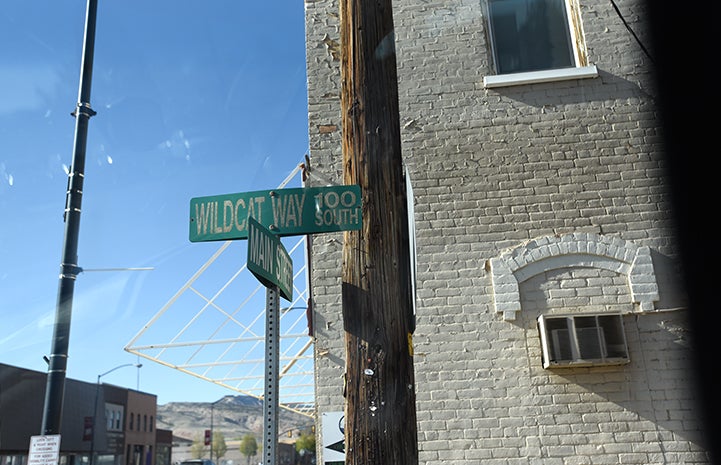
Best Friends did a lot of planning behind the scenes to make the event happen. “It was such an elusive dream,” says Best Friends’ Sandy Nelson. “To see this happen makes my heart burst.”
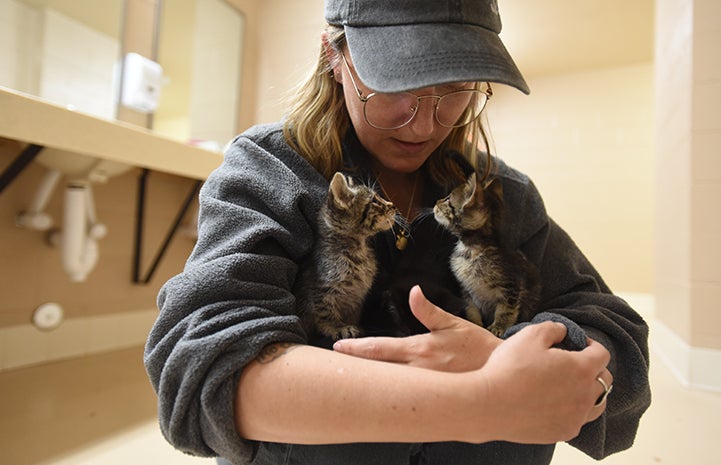
Kittens getting their first cuddles figure out that people aren’t so scary after all.
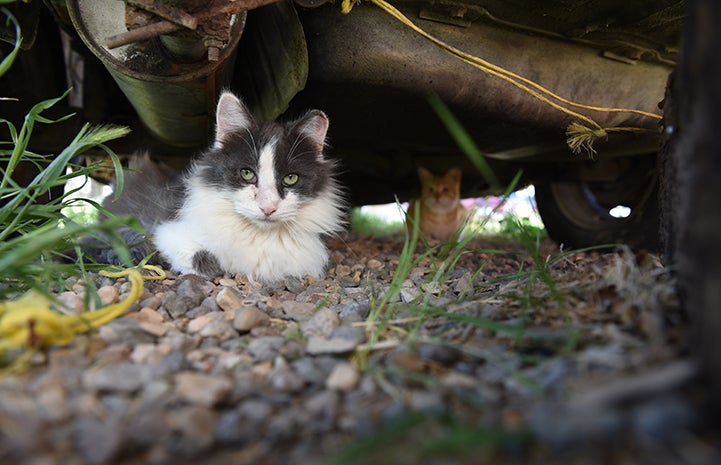
Part of responsible trap-neuter-return is ear-tipping, which allows caregivers to see at a glance which cats have been spayed or neutered. The painless procedure is performed while cats are under anesthesia.
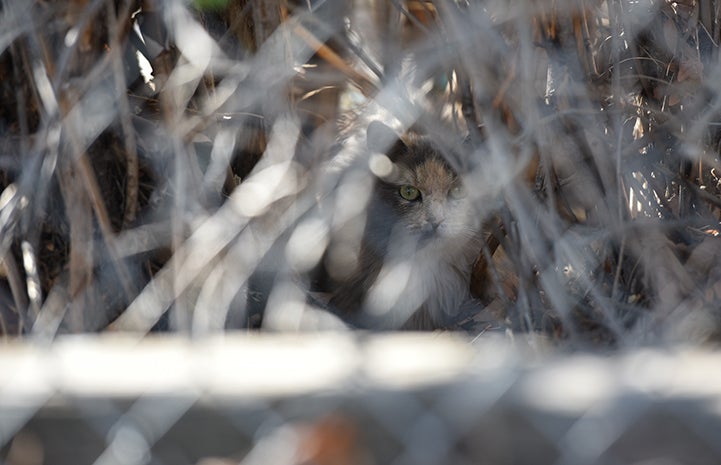
Community cats are part of life just about everywhere in the United States. Left unchecked, their numbers skyrocket, while overall health and well-being decline. Trap-neuter-return is a long-term solution that reduces the number of community cats, controls disease more effectively and takes the burden off publicly funded animal shelters.
Photos by Molly Wald